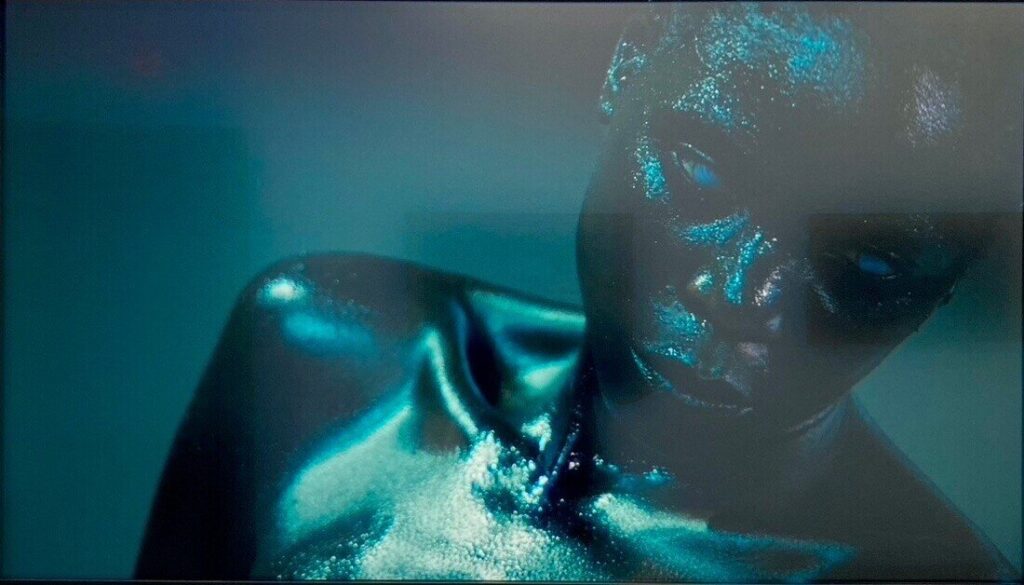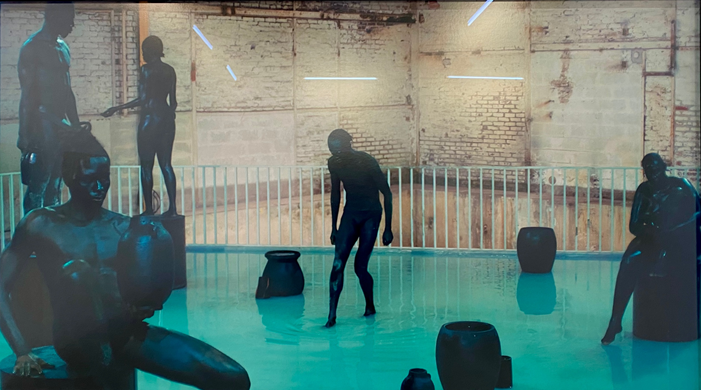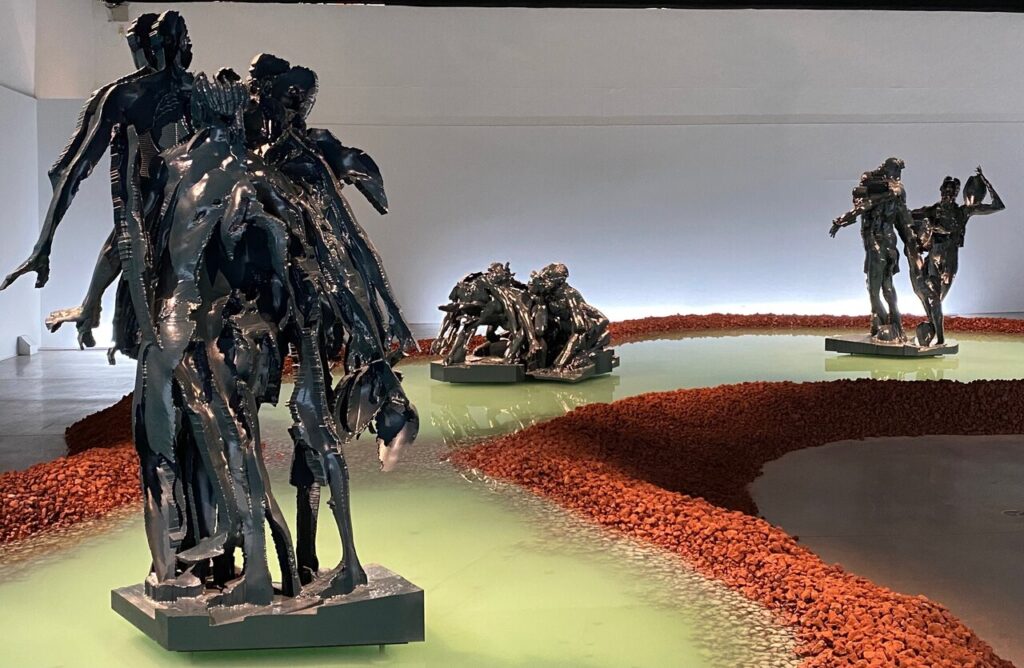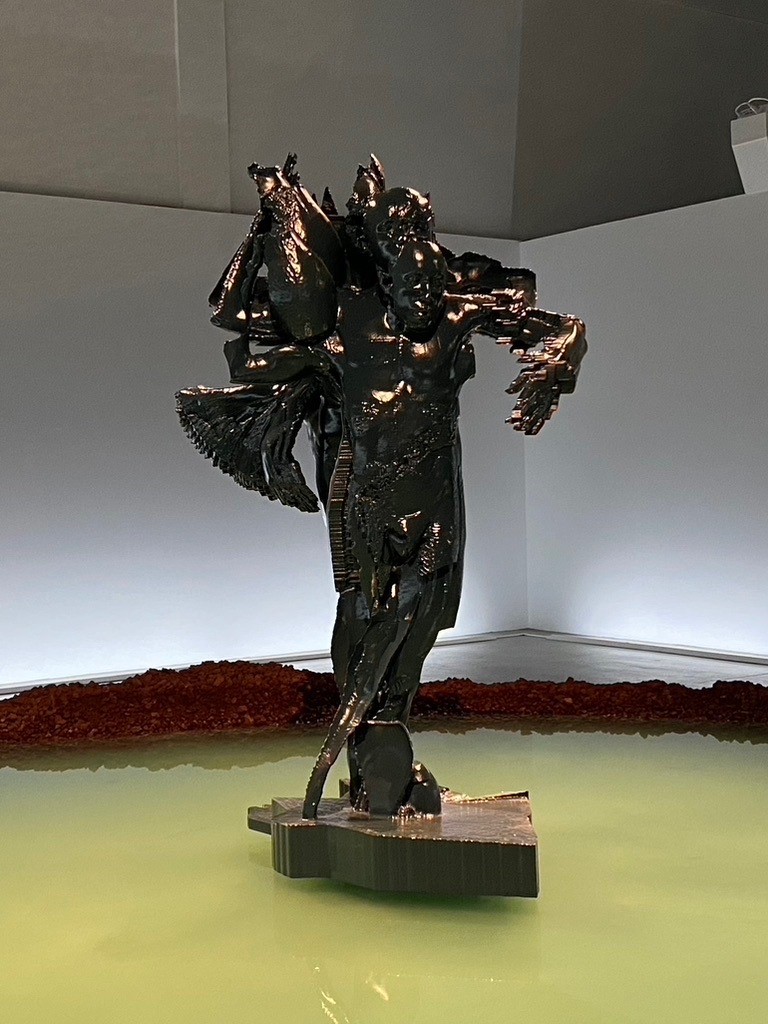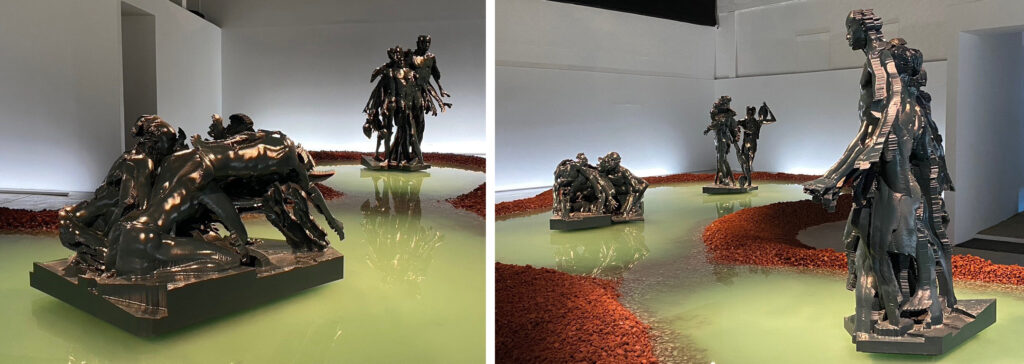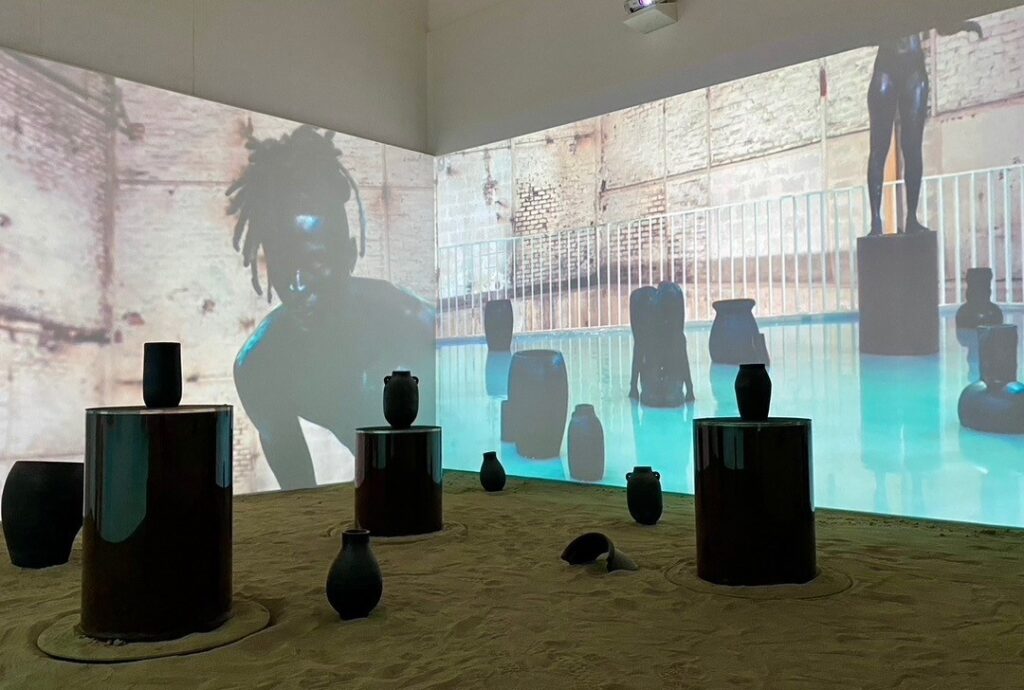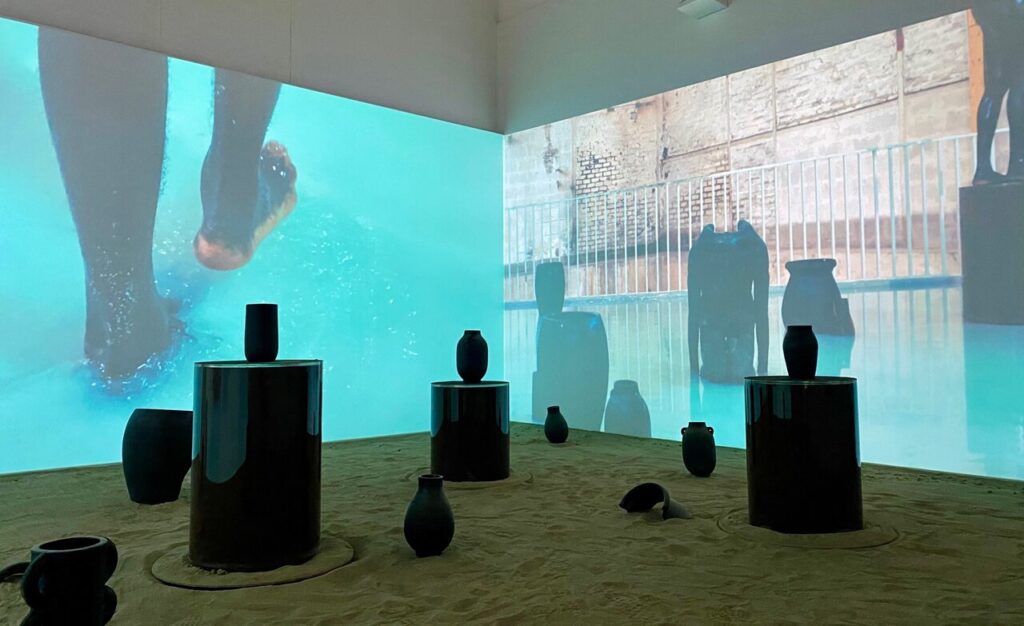Young Montreal-born performance artist, Miles Greenberg’s exhibition Late October at the Arsenal Contemporary Art transports visitors into a dreamlike world of photography, sculptures, sound, and video projection. The show captures one of Greenberg’s seven live performances, which took place over seven consecutive hours at Galleria Continua Les Moulins, (near Paris, France) in the autumn of 2020. During the performance, Greenberg and six other performers—all covered head-to-toe in glistening black body paint and wearing white contact lenses—waded slowly through a basin of water and positioned themselves on black pedestals. The performance reimagined the performers as the whitewashed sculptures of Greek antiquity, evoking themes of erosion and deterioration of the body.
Late October at the Arsenal captures the performance in different mediums, displayed in three different rooms, which get progressively more immersive as visitors move through the exhibit. In all three rooms, the same ominous music sets the tone for the display and helps transport visitors into the surreal world Greenberg has created. Like a whale song, long notes play over a low rhythmic beating, broken up by sounds of thunder and industrial machinery—both unsettling and exciting.
The first room features six photographs of Greenberg’s performance. The images are as haunting as they are beautiful. Entirely covered in a sheen of black body paint, the performers’ skin appears almost wet, reflecting background lights, which emphasize the contours of their bodies. One particularly striking picture portrays a slanted close-up of a performer’s face, with blue-green light glittering off her facial features and collar bones. Her downcast eyes contain white contact lenses, which appear to blind them, and give the image an eerie and impersonal quality. The photo also captures a sense of stillness, as though the performer is caught in a moment of contemplation. This sense of stillness, combined with the blue-green lighting, and the performer’s steely gaze— illustrate Greenberg’s exploration of the human body as sculpture.
Another remarkable photograph features four of the performers perched in different positions atop black pedestals, while one wades through the shallow basin of water—dyed an unnatural blue-green colour with high-density pigment. Although all five figures appear to be entirely still, the photo captures the physicality of the performance. The man in the left foreground balances at a challenging angle on a pedestal, one knee curled to his chest, left hand holding a vase, while his right hand rests on the pedestal, steadying himself. The black body paint emphasizes his musculature, and the physically challenging nature of the performance. Again, Greenberg’s exploration of the body as sculpture is evident in the use of pedestals and vases, which both evoke the sculptures of Greek antiquity. However, the artist has combined these elements of antiquity with distinctly modern components such as the industrial-looking brick wall in the background and the chemical hue of the water—creating a surreal, otherworldly atmosphere.
Moving into the second room of the exhibit, feels like stepping into one of the photographs of Greenberg’s performance. The room contains three life-size sculptural representations of a performance, each perched atop a pedestal that appears to be floating in a glassy pool of vibrant green water. Each sculpture features bodies that appear intertwined, disintegrating, and melding into one another—displaying Greenberg’s unique artistic process. To create the sculptures, Greenberg performed in front of a 3D scanner with the corrective settings disabled. The scans were then printed in high-density polyurethane foam and painted glossy black, resembling metal. They truly encapsulate the movement of the performance, appearing as thought figures in motion have come to a screeching halt.
Greenberg titled each sculpture after a different male-led cautionary tale from Greek mythology, further evoking themes of antiquity, disintegration, and erosion. The first sculpture visitors encounter is Icarus I—titled after the tale of a young man with wax wings, whose hubris caused him to fly too close to the sun. Greenberg’s sculpture clearly evokes the tragic tale in top-heavy configuration of bodies that remind us of angels. The figures’ arms are frozen in mid-motion arrays resemble wings, while splayed fingers look like feathers. Other body parts like the legs and facial features appear to have melted or disintegrated, giving the sculpture an unnerving quality.
The second sculpture, Narcissus I—inspired by the ancient story of a man who fell in love with his own reflection—displays several figures curled in on themselves, reaching desperately towards their reflections in the glassy water. Despite the surreal nature of the sculpture, Greenberg has also captured anatomical details that make the sculpture come alive. From close-up viewers can see individual veins, musculature, and bones in splayed hands—all of which ground the sculpture in reality.
The third sculpture, Orpheus I, evokes the mythos of a man who was not allowed to look back at his wife, lest she disappear into the Underworld. The sculpture features several figures turned urgently in the direction of Narcissus I, despite the bridge of red stones separating the two sculptures. This interaction suggests that the sculptures can be viewed individually or as one continuous piece. The backs of the bodies are almost concave, while streaks on the sides of them suggest urgency and desperation in their movement.
The third room of the exhibit is arguably the most immersive, as visitors step into a recreation of the set of Greenberg’s performance. Footage from the performance is projected onto three walls of the room, alternating between close-ups of the performer’s bodies and faces, and wide-shots of their interactions. Slow-motion close-ups convey the intensity of the black body paint. Some wide-shots portray performers wrestling in a sanded area to the side of the water basin. A few particularly jarring images depict performers with blinding white contact lenses looking directly at the viewers.
Visitors are further transported into the performance through black pedestals and vases positioned around the sandy floor of the room. Several of the vases are broken, again reimagining the pottery of Greek antiquity. The same eerie soundtrack plays—a combination of long low notes and rhythmic beating—creating the impression that the viewers have become part of the performance.
Walking through Greenberg’s Late October exhibit at the Arsenal feels like journeying through a dreamlike world. The combination of different mediums including photographs, sculpture, sound, and film, all progressively immerse visitors in Greenberg’s performance art—while simultaneously exploring themes of Greek antiquity, disintegration, and the human body.
Jennifer Boothby
All images titled: Installation view of Miles Greenberg, Late October at Arsenal Contemporary Art. Photo: Jennifer Boothby
*Exhibition information: Miles Greenberg, Late October, Arsenal Contemporary Art, 45 Ernest Avenue, Toronto.


